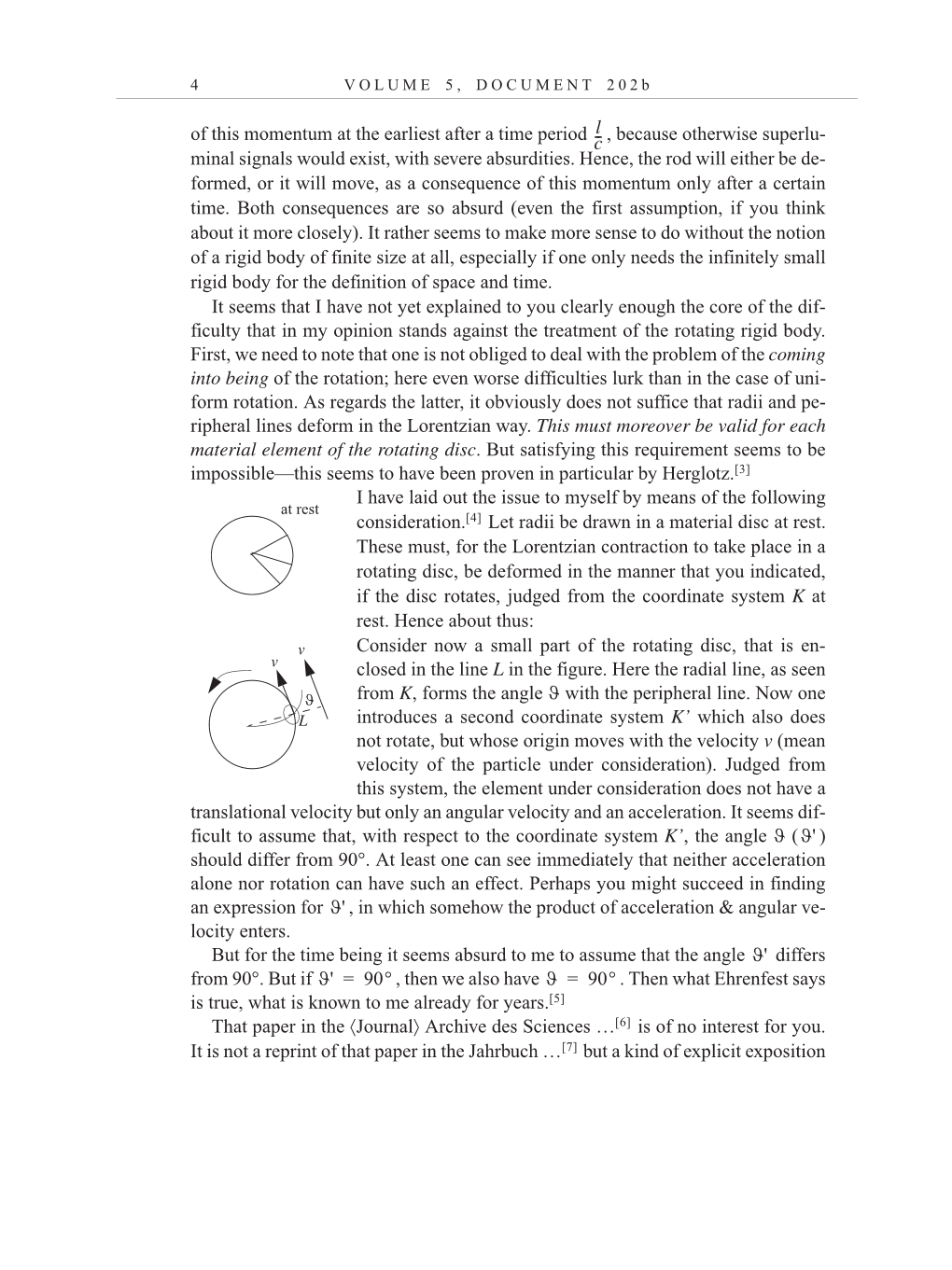4 V O L U M E 5 , D O C U M E N T 2 0 2 b
of this momentum at the earliest after a time period , because otherwise superlu-
minal signals would exist, with severe absurdities. Hence, the rod will either be de-
formed, or it will move, as a consequence of this momentum only after a certain
time. Both consequences are so absurd (even the first assumption, if you think
about it more closely). It rather seems to make more sense to do without the notion
of a rigid body of finite size at all, especially if one only needs the infinitely small
rigid body for the definition of space and time.
It seems that I have not yet explained to you clearly enough the core of the dif-
ficulty that in my opinion stands against the treatment of the rotating rigid body.
First, we need to note that one is not obliged to deal with the problem of the coming
into being of the rotation; here even worse difficulties lurk than in the case of uni-
form rotation. As regards the latter, it obviously does not suffice that radii and pe-
ripheral lines deform in the Lorentzian way. This must moreover be valid for each
material element of the rotating disc. But satisfying this requirement seems to be
impossible—this seems to have been proven in particular by Herglotz.[3]
I have laid out the issue to myself by means of the following
consideration.[4]
Let radii be drawn in a material disc at rest.
These must, for the Lorentzian contraction to take place in a
rotating disc, be deformed in the manner that you indicated,
if the disc rotates, judged from the coordinate system K at
rest. Hence about thus:
Consider now a small part of the rotating disc, that is en-
closed in the line L in the figure. Here the radial line, as seen
from K, forms the angle with the peripheral line. Now one
introduces a second coordinate system KÊ which also does
not rotate, but whose origin moves with the velocity v (mean
velocity of the particle under consideration). Judged from
this system, the element under consideration does not have a
translational velocity but only an angular velocity and an acceleration. It seems dif-
ficult to assume that, with respect to the coordinate system KÊ, the angle ( )
should differ from 90 . At least one can see immediately that neither acceleration
alone nor rotation can have such an effect. Perhaps you might succeed in finding
an expression for , in which somehow the product of acceleration & angular ve-
locity enters.
But for the time being it seems absurd to me to assume that the angle differs
from 90 . But if , then we also have . Then what Ehrenfest says
is true, what is known to me already for years.[5]
That paper in the Journal Archive des Sciences
…[6]
is of no interest for you.
It is not a reprint of that paper in the Jahrbuch
…[7]
but a kind of explicit exposition
l
c
--
at rest
v
v
L
'
'
'
' 90 = 90 =
